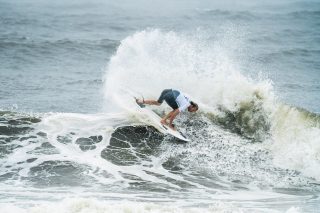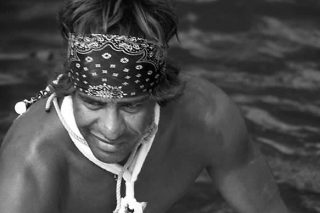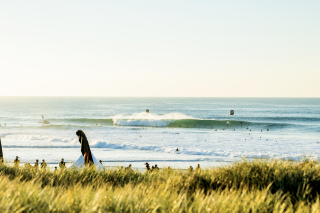ASB MAGAZINE: A junior surfing competition in South Africa has attracted local media maelstrom after a podium photo showing the best female won half as much as the male champ. Zoe Steyn won ZAR4000 (AUD$400), while Rio Waida, the male winner, surfed his way to ZAR8000 (AUD$800) at the Billabong Pro Junior series in Ballito, South Africa. The post was shared thousands of times, with comments such as:
“Did the girls surf a different ocean that was easier we don’t know about?”
“This is ridiculous. It is not 1918, it is 2018. The competition organisers should be deeply ashamed of themselves. What are we teaching our girls through this sort of archaic discrimination.”?
Responding to the online outrage WSL Australia/Oceania Regional Manager Will Hayden-Smith told ABC’s ‘The Hack’ saying;“Men get double the money, because there are double the competitors,” adding “on first glance does look like a huge disparity”.
“It highlights an issue, but it’s a very complicated one,”said Will Hayden-Smith.
The WSL argument comes down to the concept of prize-money-per-surfer, which it says shows the equality of pay between male and female competitors. It works like this: say there are 10 surfers competing for a total pot of $100 in prize money. That works out to a ratio of $10-per-surfer. The winner gets $50, and the runners up get the rest.
Now say there is a female competition of five surfers. At the same ratio of $10-per-surfer, the total prize money is $50. The winner gets only $25.
That was the case at the Ballito Pro, the WSL said. There were twice as many male surfers as female ones: 36 compared to 18. To keep the same money-per-surfer ratio for men and women, the prize money for the female winner had to be half as much as the men.
“Men get double the prize money only because there are double the competitors,”said Will Hayden-Smith.
The same thing happens at Australian junior surfing events.
“In Australia, the prize money at a junior event is $2,500 for women and $5,000 for men. In the men’s field we have 64 surfers and in the women’s field we have 24, ” said Hayden-Smith.
The solutions to this would be to either just scrap the ratio system that leads to female winners competing for less, or to increase the number of female surfers to match that of the men.
The WSL said that neither were options right now.
“The demand is simply not there,” said Will Hayden-Smith.
“We usually have a waiting list of about four surfers to get into the women’s competition.”
“On the men’s side we have about 30-40 on the waiting list.
“If the demand was there on the women’s side we would expand the draws.”
Critics have argued that one way of increasing the popularity of women’s surfing could be to increase the amount of prize money.
Will acknowledged that, whatever the reason for the difference in prize money, the Ballito Pro photo circulating online could be a bad look for the sport. He said female surfers also struggled more than male surfers to get sponsored.
“That’s one reason we charge less entry fees,”he said.
“At the QS 6,000 pro surf event in Manly in March, the entry fee for the men was US$250 and for women US$150,”he said.
“This was just because we felt that if we charge the same entry fee that would prohibit women from competing.”
He said surfing had been running a women’s championship tour for four decades and had done a better job of equal pay than other sports.
Two years ago, the ABC reported that an entire women’s AFL team cost less than a single average male player – most female players were earning about $5,000 a year, while the average male AFL footballer was taking home about $300,000.
Hayden-Smith pointed out that the current World Champion, Tyler Wright, earned hundreds of thousands of dollars a year. In 2016, she earned more than the top male surfer.
“We do want to note the fact we have done a lot of things right at the championship level,”he said.
A WSL statement went further, saying;
“In recent years, the organization has instituted pay parity at the Championship Tour level and we are in the process of instituting across other disciplines. As we continue to steward and enhance professional surfing worldwide, our focus will be on elevating the development tiers in this area,”
“The issue raised with regards to the Billabong Ballito Pro Junior stemmed from a pay parity execution based on original 32-man and 16-woman fields. However, withdrawals from the men’s event left a 24-man field (withdrawals saw only 14 ultimately compete on the women’s side) and a subsequent pay disparity between the two events.”
“This is an important topic to us. Our sport features amazing women athletes who compete alongside their male counterparts. We are committed to providing a platform for the best surfers in the world, regardless of gender, and recognize that prizing is an important factor in creating that platform.”
“We do acknowledge there’s room for improvement,” concluded WSL’s Will Hayden-Smith
VIA ABC – The Hack, @WSL.








